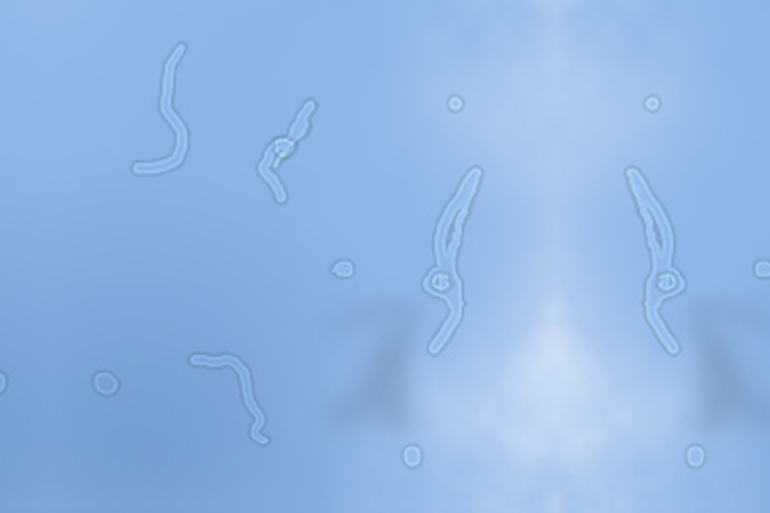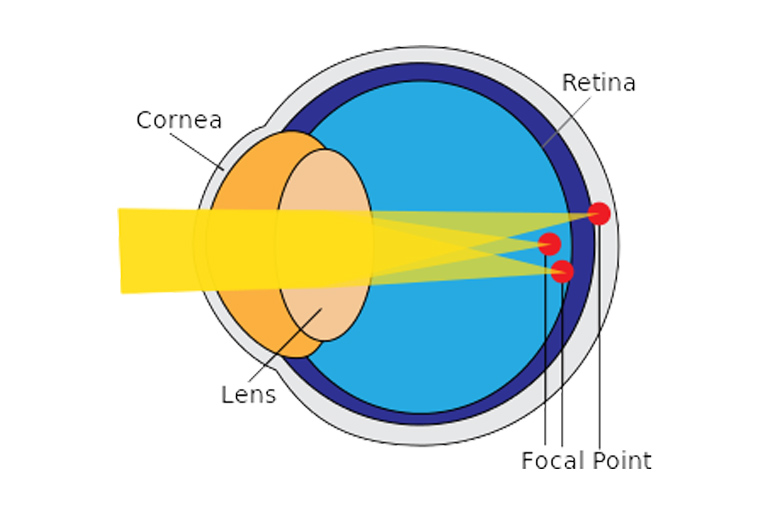Eye Conditions

Cataract
Your eye "sees" by focusing light rays onto the retina and sending to the brain. These light rays are focused, in part, by the lens. As we age changes occur to the lens that make it cloudy and less transparent. As the transparency diminishes, the light rays aren't clearly passed through. This change is called a cataract. As the lens changes symptoms start to become noticeable. Initially the symptoms are mild such as increase in glare, slight blurry vision, and difficulty with night driving. If the cataract isn't addressed the symptoms progress and vision is greatly impacted. Because the change in vision is due to the cataract new glasses often do not help, surgery is required to remove the cataract. Cataracts can also be congenital (present at birth) or caused from trauma.
Glaucoma
Glaucoma causes damage to the optic nerve in the back of the eye. The optic nerve is a "cable" that is made up of the nerves from the retina. As the optic nerve is damaged there are blind spots in our vision, mainly in the periphery. Eventually untreated glaucoma can cause loss of peripheral vision "tunnel vision" and blindness. The disease is usually very slow in progression so the loss is often not noticed. Glaucoma is most often caused from an increase in intraocular pressure (IOP). This can be a slow, long term increase known as primary open angle glaucoma or a sudden onset increase known as closed angle glaucoma. If the optic nerve is unusually weak even normal pressure can lead to damage. Pediatric glaucoma is rare but can be seen in infancy through childhood. Risk factors for glaucoma include family history, ethnic background, and advanced age. Treatment of glaucoma is very effective. It ranges from daily drops forever to surgical procedures.

Dry Eye Syndrome
In normal eyes the surface is covered with a healthy tear film. If the tear film is not adequate dry eye syndrome can result. Symptoms of dry eye syndrome include burning, stinging, scratchy, red, irritated, intermittent blur, and often painful eyes. If the tear film is compromised reflex tear can occur (like when peeling onions or when we get emotional). This results in excessive tearing, "tears streaming down my face". There are many reasons for dry eye syndrome, environment, age, contact lens wear, medications, and underlying lid dysfunction. Treatment includes artificial tears, supplements, prescription drops, and punctal plugs.
Corneal Abrasion (scratched cornea)
The cornea is the clear dome in the front of the eye, it bends light to aid in focusing rays onto the retina. It is also the location of a common eye injury, corneal abrasion. The cornea is made up of layers, the outer layer being the epithelium layer. If this layer is scratched the result is often very painful, causes light sensitivity, excessive tearing, and often a change in vision. Corneal abrasions usually heal well with treatment (prescription drops, etc.).

Conjunctivitis (Pink Eye)
Conjunctivitis is the infection or inflammation on the conjunctiva (the outer covering of the eye). The eye becomes red or pink because the blood vessels in the tissue become dilated. Symptoms include redness, sometimes discharge, discomfort, and sometimes itch. Vision is not effected. Conjunctivitis can be caused from bacteria, virus, or allergies. Treatment depends on the causes. Some conjunctivitis is contagious and care should be taken to prevent spreading, especially frequent hand washing. Red eyes for contact lens wearers can indicate a more severe problem, corneal ulcer, and those patients should be seen by their Optometrist right away.

Floaters/Flashes
Floaters are small specks or "clouds" that appear in your vision as you look at a plain background (clear blue sky or blank wall). They are often not noticed when they are small or not in the direct line of sight. Although floaters appear "outside" they are actually inside the eye. The vitreous, the clear gel that fills the eye, changes as we age and clumps are formed. As light enters the eye the floater casts a shadow on the retina and we see it in our vision. When the vitreous gel causes traction on the retina small flashes or flickers of light can be seen.Flashes and floaters can be a symptom of retina tear or retinal detachment. Retinal tears are a serious problem that can lead to loss of vison and blindness. If you experience new floaters or flashes call immediately to be seen by your eye care professional.

Refractive Errors
Light rays that enter the eye need to be refracted (bent) onto the retina for us to see clearly. The cornea and the lens in the front of the eye bend light so it focuses on the retina. If the light is not focused on the retina we see blurry, called having a refractive error.
Myopia (near sightedness) is when the light is focused in front of the retina. This occurs when the eye is too long in relation to corneal curvature. Myopes see images in the distance as blurry and near images as clear.
Hyperopia (far sightedness) is when the eye is too short compared to the curvature of the cornea. Images in the distance are clearer than at near.
Astigmatism (oval shaped cornea)
If the cornea has irregular curvature than light is not focused all in one spot. Images will appear blurry at both distance and near.
Presbyopia
As we age, the lens becomes harder and we are unable to adjust our focusing to read. Typically this becomes noticeable in our 40s.

